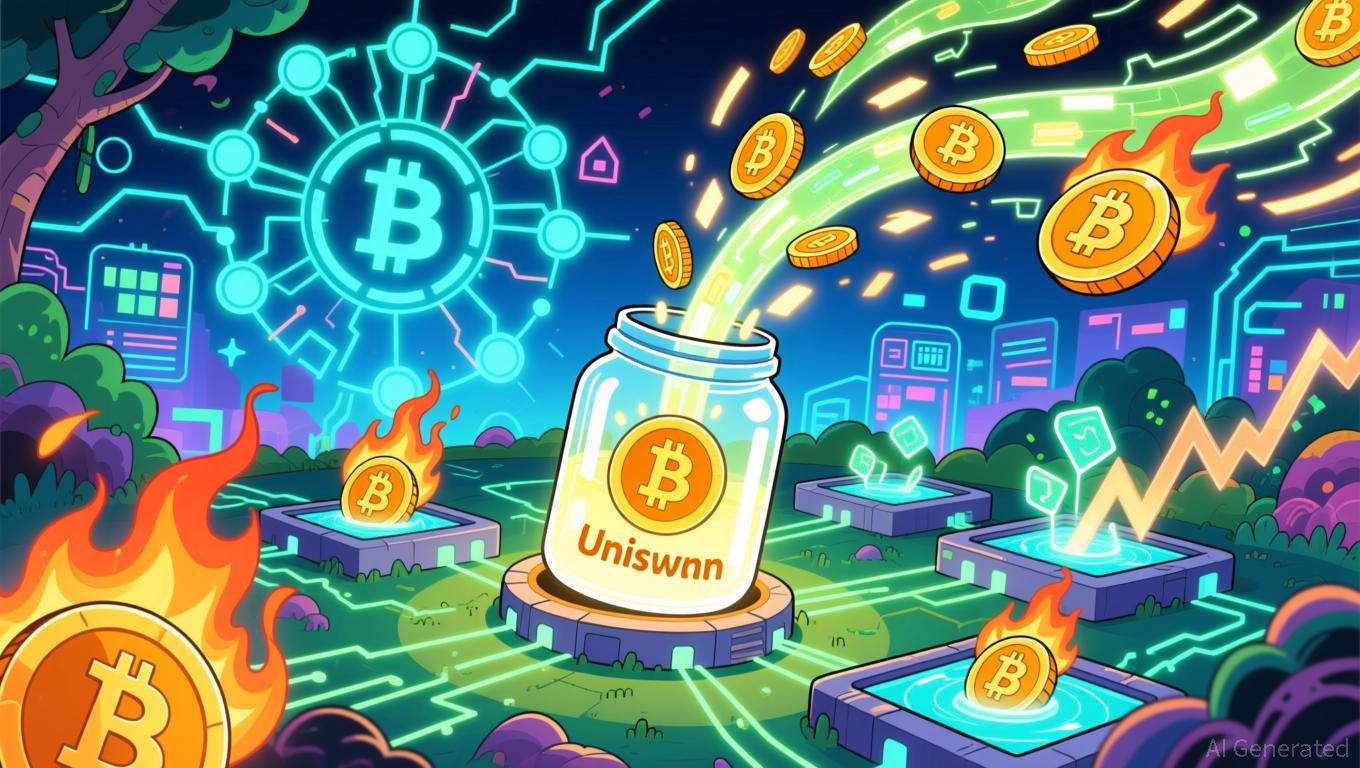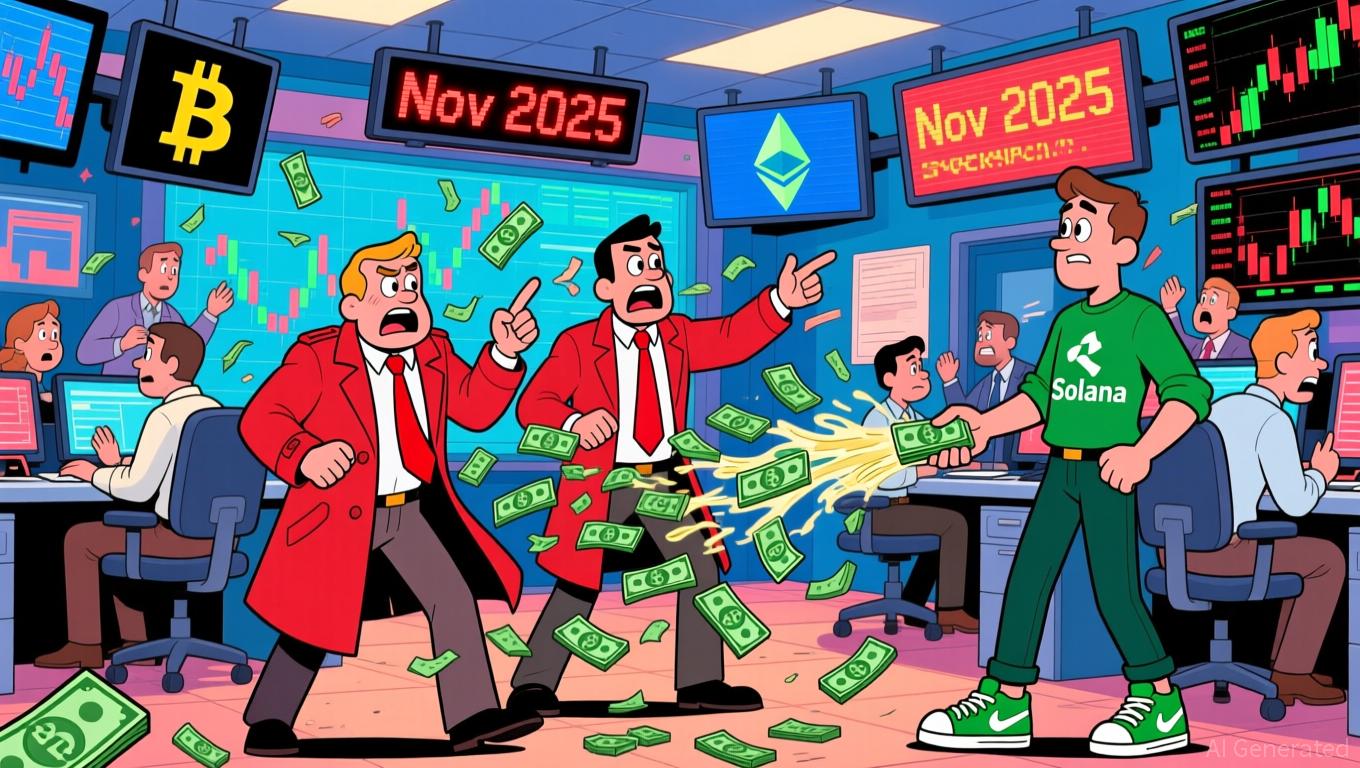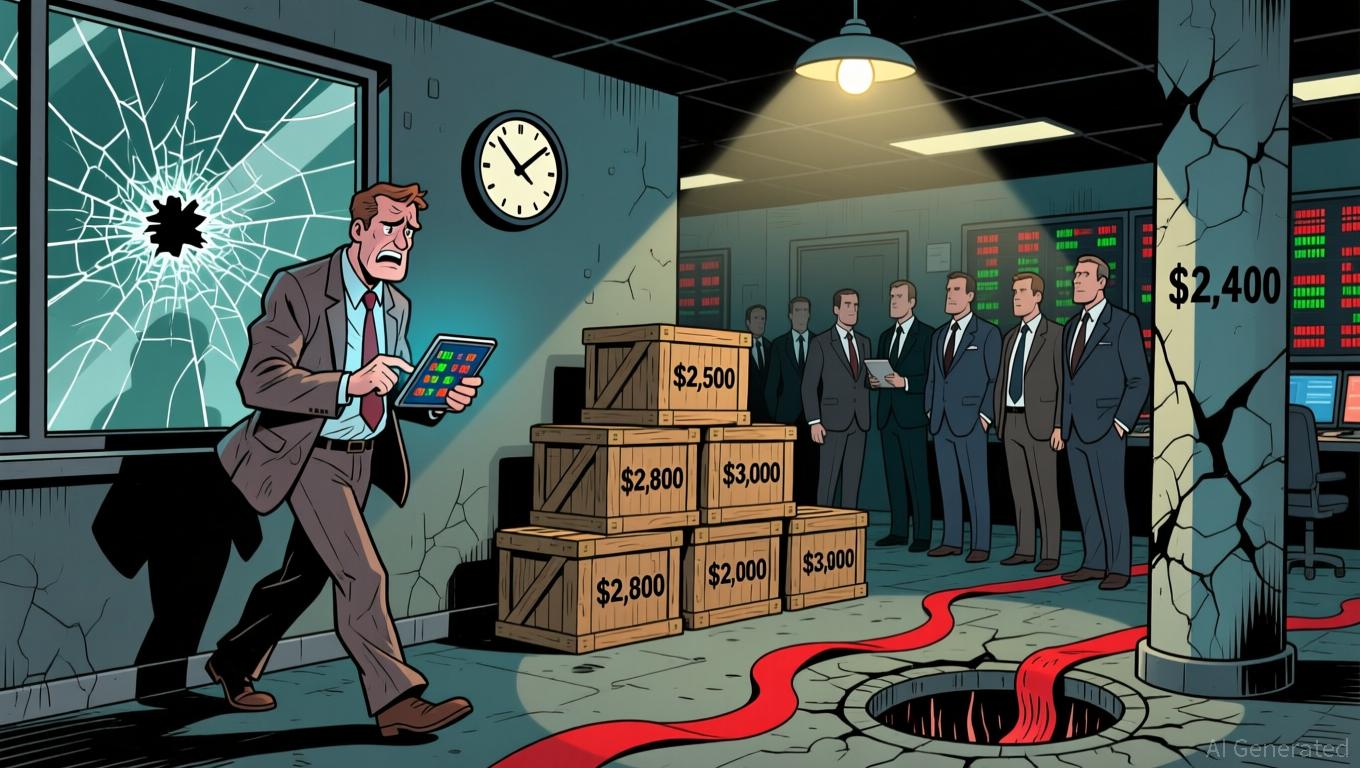Uniswap News Today: Addressing DeFi's Value Gap: Uniswap's Debated Fee Restructuring
- Uniswap's UNIfication proposal redirects trading fees to a "token jar," enabling UNI holders to burn tokens for assets, aiming to align protocol growth with token value. - The plan includes a 100M UNI retroactive burn (16% of supply) and Layer-2 integration to sustain supply reduction, addressing DeFi's historic disconnect between usage and token valuation. - Critics warn liquidity providers may lose earnings, while a UK whale's $10M short positions highlight market skepticism despite community debates o
Uniswap’s UNIfication Proposal: A New Era for DeFi Tokenomics
Uniswap has introduced the UNIfication proposal, a plan designed to directly connect the protocol’s trading fees with UNI token buybacks. This initiative has received strong early backing, suggesting a major transformation in the landscape of decentralized finance (DeFi) token economics. Although UNI’s market capitalization has dropped to $6.8 billion from its previous high of $21.7 billion, Uniswap’s monthly trading volume soared to $116.6 billion in 2025—almost three times higher than in 2023. This contrast between the protocol’s growth and the token’s declining value has fueled discussions about potential misalignments in DeFi governance. Supporters believe the proposal could address these issues by tying trading activity more closely to token demand.
The core of the UNIfication proposal is a fee switch mechanism that diverts a share of Uniswap v2 and v3 trading fees into a dedicated “token jar.” UNI holders would have the option to burn their tokens in exchange for assets from this jar, effectively reducing the token’s circulating supply and potentially increasing its value. Additionally, the proposal suggests a one-time burn of 100 million UNI tokens—representing 16% of the current supply—to compensate for fees missed during periods when the fee switch was inactive. By integrating revenue from Layer-2 solutions, this approach aims to create a sustainable model for reducing supply and rewarding long-term holders. However, some critics caution that liquidity providers (LPs) might see their earnings decrease as a result of the redirected fees.
Reactions from the market have been varied. A notable investor, known by the address 0xa31, has taken advantage of UNI’s price swings by shorting the token along with meme coins such as ASTER and MON. As of November 26, this investor had realized $6.23 million in profits from short positions, with an additional $4 million in unrealized gains. This activity reflects ongoing skepticism about UNI’s short-term prospects, even as the community debates the proposal’s long-term impact. Meanwhile, the UK’s fiscal policies have drawn comparisons to Uniswap’s strategy, particularly Chancellor Rachel Reeves’ budget proposal to increase international student fees in order to fund grants for domestic students—a move seen as another example of value redistribution.

Industry experts have largely welcomed the proposal’s potential to reshape DeFi economics. Crypto analyst Simon Dedic observed that the combination of the fee switch and retroactive token burns could prompt other DeFi projects to focus more on increasing token value, which may help restore investor confidence. He emphasized the importance of Uniswap’s initiative, suggesting it could bridge the longstanding gap between protocol performance and token valuation. Nonetheless, the proposal faces challenges. Its reliance on token burns differs from alternative models like veLocks, which reward long-term engagement through enhanced voting power. There are also concerns about the potential impact on liquidity providers and the possibility that less reputable pools could lose trading volume after the changes take effect.
As the DeFi sector considers the implications of the UNIfication proposal, its adoption could set a new standard for aligning token incentives with protocol success. By tackling structural inefficiencies and introducing features such as Protocol Fee Discount Auctions (PFDA) to capture MEV internally, Uniswap is positioning itself to remain competitive in the increasingly crowded decentralized exchange (DEX) market. The results of this initiative are likely to shape broader trends in the industry, especially as established financial players like Coinbase roll out their own ambitious DeFi offerings.
Disclaimer: The content of this article solely reflects the author's opinion and does not represent the platform in any capacity. This article is not intended to serve as a reference for making investment decisions.
You may also like
Bitcoin Updates: Investors Move Away from Bitcoin and Ethereum ETFs While Solana and XRP See Increased Interest
- U.S. Bitcoin and Ethereum ETFs faced $5.58B in November outflows as investors shifted to Solana and XRP funds amid market selloffs. - BlackRock's IBIT led BTC outflows with $355.5M single-day withdrawals, while Fidelity's FETH attracted $95.4M ETH inflows. - Solana ETFs gained $476M since October debut, contrasting BTC/ETH declines, as analysts cite institutional profit-taking and risk-off positioning. - Recent stabilization saw $129M BTC and $78M ETH ETF inflows by Nov 25, though long-term structural ch

AI Industry's Profit Boom Fails to Ease Doubts Over High Valuations Amid Intensifying Sell-Off
- AI sector faces valuation skepticism despite strong earnings, with Nasdaq down 2.2% as investors shift to defensive stocks. - C3.ai's 26% monthly decline highlights challenges: 19% revenue drop, leadership changes, and uncertain Microsoft partnership monetization. - Decentralized GPU platforms like CUDOS Intercloud gain traction by offering cost-effective alternatives to cloud giants through smart contracts. - Palantir contrasts with 62.8% revenue growth and 40.3% net margin, leveraging NVIDIA partnershi

XRP News Today: Abu Dhabi’s Green Light Establishes UAE as a Pioneer in Stablecoin Development
- Ripple's RLUSD stablecoin gains Abu Dhabi regulatory approval as UAE advances digital finance leadership. - ADGM's "Accepted Fiat-Referenced Token" designation enables institutional use for lending and cross-border payments. - RLUSD's $1.2B market cap growth reflects institutional demand, backed by USD reserves and dual blockchain operations. - UAE's ADGM-DIFC regulatory synergy attracts global fintechs , with Ripple expanding partnerships across Africa and Asia. - Regulatory milestones position RLUSD to
Ethereum Updates: Ethereum Drops to $2,800, Prompting Surge in Demand for ZKP's Hardware-Based Presale
- Ethereum's price fell below $2,800, triggering $6.5M liquidations and testing critical support levels amid declining on-chain demand metrics. - Institutional players like BitMine accumulated 3.62M ETH (~$10.4B) despite the selloff, signaling long-term bullish conviction. - ZKP's hardware-driven presale gained traction with $17M in ready-to-ship Proof Pods and Miami Dolphins partnership for privacy-focused sports analytics. - Mutuum Finance's $19M DeFi presale and ZKP's auction model with $50K wallet caps
